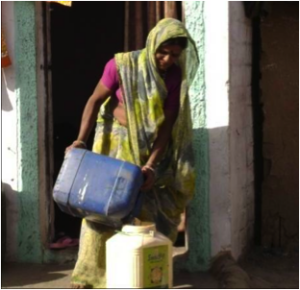It’s expensive to be poor. I had this realization while working in India in 2010 on a study of climate change and water in cities.

My team worked in 5 neighborhoods in a city in the center of India to develop strategies to help cities become more resilient to climate change impacts such as water scarcity and flooding. While documenting the prices people were paying for water from the formal (water utilities) and informal (water market) sectors, I realized that the poorest people were paying far more for water than their wealthier neighbors who were connected to the municipal piped system.
Our key findings, summarized in the report, found that poor urban residents:
- Already pay some of the highest prices per unit of any group for water.
- Will face substantial impacts from climate-changed induced water scarcity
- Often lack both piped water and access to reliable markets.
- Spend a disproportionate amount of time and money obtaining water for their household.
What we found in India is repeated in many other developing world cities. A 2006 United Nations Report documents that in Jakarta, Lima, Manila, and Nairobi, people living in low income settlements were paying between 5 and 15 times what high-income residents of the same city were paying for water. In fact, residents of the slums in Accra and Manila were paying more for water than people in London, Rome, and New York.
